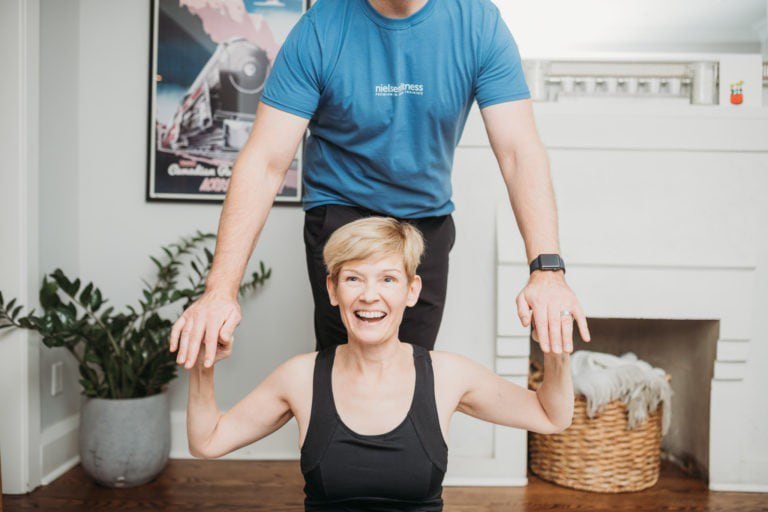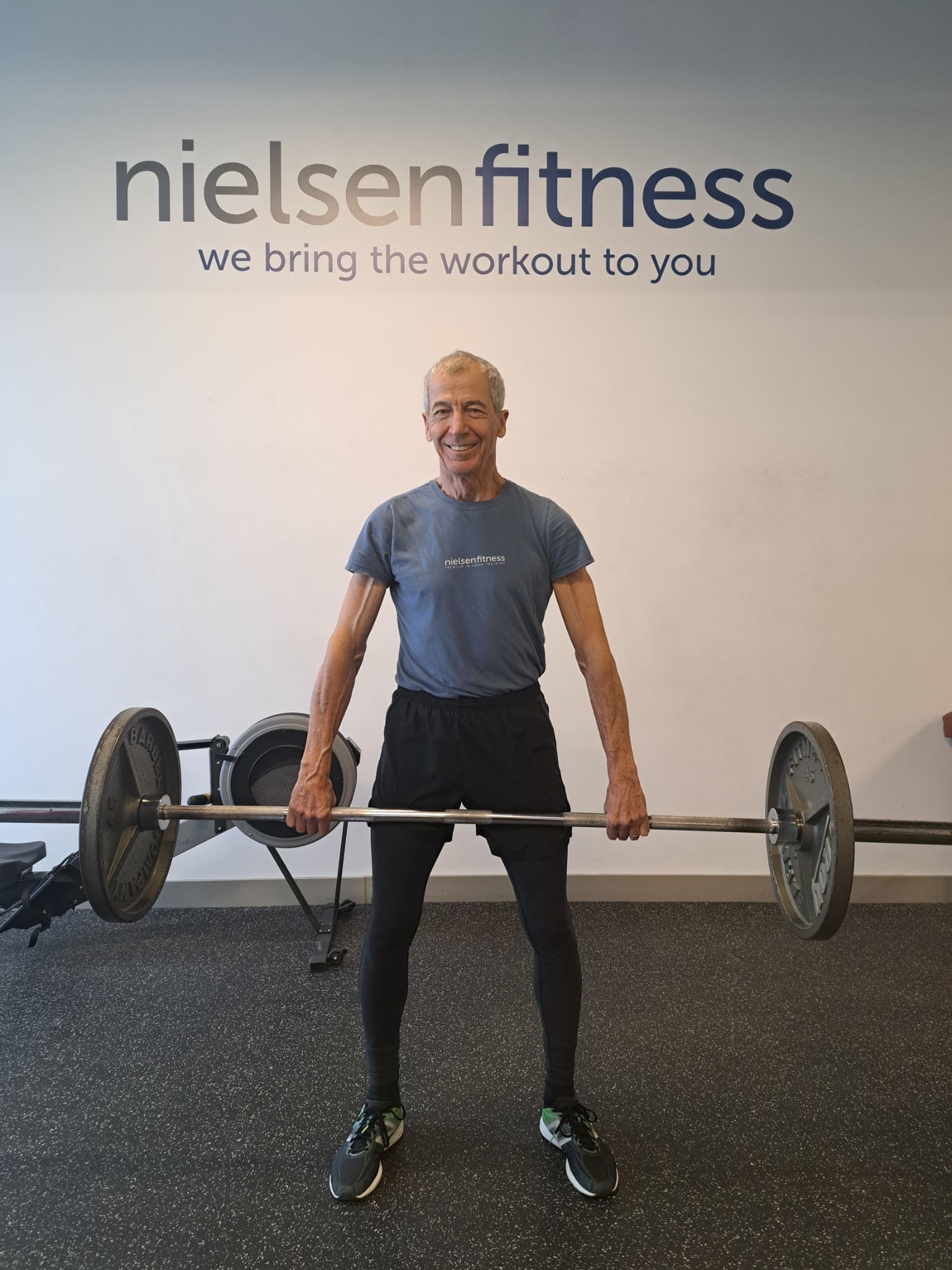Aging Core Strength Fitness Tips
January 19th, 2024
Strength training can slow the ageing process. Here’s how.
What if I told you that, regardless of your age, it is possible to generate, retain, and improve upon various youthful qualities?
During our youth, we are able to perform physical movements with confidence and with minimal or no pain. The body is flexible. Injuries and illness never seem to last all that long. You might even recall being in a great mood, full of vitality, and feeling optimistic about the future. The possibilities to grow and try new things seemed limitless.
As time goes on, the body faces varying degrees of degeneration. Mobility and flexibility might become more limited. Injuries and pain become more common. You might tire easily, and trying new things might feel more risky than worthwhile. But it doesn’t have to be this way!
At Nielsen Fitness, we’ve helped improve the lives of hundreds of older adults with our personal training. What’s our secret? It all comes down to our unique process that can help you reclaim your youth and break through the confines of time.
How Exercise is Anti-Aging
Think about it: If you suddenly improved all of these qualities, such as your flexibility, mobility, and energy, how would you feel? I argue that physiologically you would feel and look younger.
A 2014 study conducted at McMaster University discovered that people over 40 who participated in regular exercise had skin composition resembling that of 20 to 30 years olds.
Specific movements and types of exercise, including strength training, further help:
● Improve posture
● Increase flexibility and mobility
● Increase pro-metabolic muscle mass
● Improve memory and learning
● Slow cellular aging
● Decrease stress
A 2019 systematic review of various scientific studies stated, “resistance exercises and resistance training (strength training) evoked substantial functional brain changes, especially in the frontal lobe, which were accompanied by improvements in executive functions. Furthermore, resistance training led to lower white matter atrophy and smaller white matter lesion volumes.”
Research also points out that mitochondria, the powerhouses of the cells, increase through cardiovascular conditioning. Aerobic and cardiovascular conditioning, which can be achieved via strength training exercise, is further associated with a greater stroke volume and increased heart size, improving the effectiveness and efficiency of blood circulating throughout the body and contributing to a lower resting heart rate.
Undeniably, improving upon all of these qualities would make you physiologically and mentally younger. The good news is that we’re here to help you do just that. So, what else should you know?
Tips for Exercising & Slowing Down the Aging Process
1. Follow a customized, safe, and effective approach
It is important to not start your journey with a pre-formatted and general cookie-cutter program. These types of approaches aren’t made for you and your unique situation, which means participating in them may actually increase your risk of injury and lower your adherence to exercise.
Generally, you should ease into a program that is made specifically for you and your goals. This ensures you perform movements safely, which will be more effective for you.
2. Track your progress and measure your results
How do you know how far you’ve come if you don’t have the data that shows it?
Tracking helps you take note of your progress. This can motivate you to keep going and help you set realistic goals moving forward. It also allows you to visibly, physically, and intrinsically feel all of the youthening results as they happen.
3. Start slow
Adopting a holistic approach to fitness is key to achieving balance and sustainable results. It’s essential to incorporate ample rest and recovery in your regimen, alongside the workouts. Paying close attention to your body’s signals is crucial; if you encounter soreness or tightness, it’s important to recognize these as signs to ease off the intensity rather than pushing through potential pain.
In such instances, active recovery exercises become your allies, promoting circulation and flexibility without overexertion. Coupled with the right nutritional choices that fuel and heal your body, this comprehensive approach ensures that even on lighter days, you’re still making positive strides towards your goals. By listening to your body and responding with care, you keep progressing without the setbacks that can come from ignoring your physical cues.
4. Find support
In a 2011 study, researchers emphasized the importance of low goal setting, new stimuli, and social support in relation to adherence to exercise. This means that having friends to workout with or support that holds you accountable can go a long way in helping you achieve your fitness goals.
While it’s important to find social support in your life, you may need further support from a nutritionist or dietitian too. With a supporting team working with you, improving your health and vitality becomes that much easier.
Regardless of your age, you can get started and you can improve. The most successful people we’ve worked with have succeeded with the help of various experts. If you’ve tried to strength train in the past and have not been consistent or successful, this is all the more reason to hire a qualified trainer to guide and coach you to success.
Start Today!
If your goal is to “feel” younger with a dedicated program crafted to combat the effects of aging, or if your focus is to initiate a safe and effective fitness plan from the comfort and safety of home, we’re ready to guide you on that journey.
Choose from our personalized in-home personal training or virtual personal training options. Our personalized approach considers your specific needs, preferences, and goals, ensuring a fitness plan that’s as unique as you are.
Click Here to apply for a complimentary fitness assessment and first workout.


